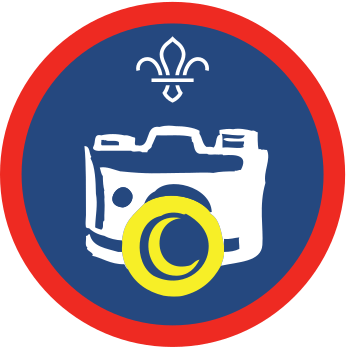Green machine
You’ll need
- Clean items of recycling
- Scissors
- String
- Washi tape, or decomposable alternative
- A pinhole camera (from the 'Pinhole pictures' activity)
Before you begin
- Each group will need a pinhole camera for their green machine constructions, so consider running Pinhole pictures before you do this activity.
- Find out what is recyclable in your area by using this recycling locator. Make sure everyone in the group, as well as parents or carers, are aware of this, and ask everyone to bring with them plastic or cardboard items that can be readily recycled in the local area. When brought, these should be sorted into piles of large items, small items, short items and long items.
- Check that the pinhole cameras from the previous activity are still in working condition.
Run the activity
- Show everyone the recycled materials and have everyone get into the groups from the previous activity. Each group should have the pinhole camera they made. They should think about an accessory they could make from the recycled materials that attaches to their camera (eg a tripod, strap, lens, flash or container).
There should be no glue, tape or glitter available, as these craft items aren’t environmentally sustainable.
- See what the groups come up with. Make sure everyone has come up with a realistic idea. Everyone should then select the items to make their accessory.
Whatever the groups make should be tested to make sure it works. For example, a camera strap should be able to hold up the pinhole camera without breaking. For something like a lens, which is difficult to make, the group should focus on making their accessory look right.
- Give out string, scissors and washi tape. String can be used to connect components and can usually be recycled, while scissors can cut slots that may be used to fit the pieces together. Washi tape is a great, recyclable alternative to traditional plastic-based tapes.
- Everyone should work on their accessories. Give everyone time to fit them to the camera and test them.
- When everyone’s done, groups should swap places, moving from their camera to the next one along to see what others have made. Keep doing this until everyone has inspected all the models. With care, they should also test the accessories the other groups have made.
- Start a discussion on the cameras and accessories everyone has just seen and tried out. See if anyone thought one group in particular (apart from their own) used the materials available well. Find out what the groups know about repurposing materials in this way and why they think it’s important.
Reflection
In this task, everyone had to make something for their camera using recycled materials. Most cameras and smartphones have a wide range of attachable accessories that make them better or easier to use. Why is it good to be able to attach and detach these features? Why do you think there was no glue, sticky tape or glitter available for this activity? Why could these craft items be described as ‘unsustainable,’ and why are the scissors, string and washi tape different?
Safety
All activities must be safely managed. You must complete a thorough risk assessment and take appropriate steps to reduce risk. Use the safety checklist to help you plan and risk assess your activity. Always get approval for the activity, and have suitable supervision and an InTouch process.
- Rubbish and recycling
All items should be clean and suitable for this activity.
- Scissors
Supervise young people appropriately when they’re using scissors. Store all sharp objects securely, out of the reach of young people.
- Sharp objects
Teach young people how to use sharp objects safely. Supervise them appropriately throughout. Store all sharp objects securely, out of the reach of young people.
- Poles and long objects
Be careful when moving poles or long items. Take care if the ends are sharp. Have appropriate supervision for this activity.
Add another step to the testing of the accessories to make sure that they’re made well. For example, with a tripod, you could test how much weight it’ll hold, besides just the pinhole camera.
Supervise this activity, particularly where hard plastic items are being cut with scissors, as this can be fiddly.
Encourage groups to work together by having each member perform a task that they’re comfortable doing.
All Scout activities should be inclusive and accessible.
Allow those taking part to customise their accessories however they like.

